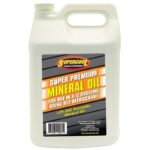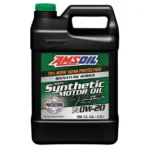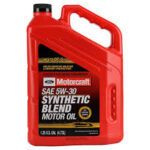When it comes to car maintenance, engine oil is one of the most critical elements. Understanding engine oil types is also helpful for maintaining your car’s health. It acts as the lifeblood of your vehicle, ensuring that your engine parts move smoothly, stay cool, and remain clean. But with so many types of engine oils available in the market, how do you know which one is best for your car
This article is your complete guide to understanding engine oil types, their differences, and how to choose the right one for your vehicle. Whether you are a car enthusiast or just a regular driver looking to take care of your ride, this guide will help you make the best decision.
Different Types of Engine Oil
Engine oils come in several types, each designed for different engines, driving habits, and climate conditions. Here are the main categories
1 Conventional Engine Oil
Also known as mineral oil, this is the most basic type of engine oil. It is made from refined crude oil and includes additives to help it perform better.
Pros
Affordable and widely available
Suitable for older car models
Acceptable for low mileage and regular driving
Cons
Breaks down faster at high temperatures
Needs more frequent oil changes
Less protection in extreme conditions
Best for drivers with older engines or those who drive short distances in mild climates.
2 Synthetic Engine Oil
Synthetic oil is chemically engineered to provide superior performance. It offers better protection and lasts longer than conventional oil.
Pros
Excellent performance in extreme temperatures
Lasts longer between oil changes
Keeps engine cleaner
Enhances fuel efficiency
Cons
More expensive than conventional oil
Best for high-performance cars, turbocharged engines, and vehicles driven in extreme temperatures or under heavy loads.
3 Synthetic Blend Engine Oil
This is a mix of synthetic and conventional oils. It offers many benefits of synthetic oil at a lower cost.

Pros
Better protection than conventional oil
More affordable than full synthetic
Suitable for light trucks and SUVs
Cons
Not as refined as full synthetic
Shorter life span compared to full synthetic
Best for drivers who want better performance and protection without paying the price of full synthetic oil.
4 High Mileage Engine Oil
Specifically designed for vehicles with over 75000 miles on the odometer, high-mileage oil contains additives to reduce leaks and oil burnoff.
Pros
Helps condition engine seals
Reduces oil consumption and smoke
Minimizes engine wear
Cons
Slightly more expensive than conventional oil
Best for older vehicles or those with high mileage and signs of oil leaks or engine wear.
Understanding Viscosity Grades
Viscosity refers to how thick or thin the oil is and how it flows at different temperatures. It is represented by numbers like 5W30 or 10W40. Here’s what it means
The W stands for winter.
The number before the W indicates how the oil flows at low temperatures.
The number after the W shows how it flows at high temperatures.
For example, 5W30 oil will perform well in cold weather and maintain proper thickness when the engine is hot. Choosing the right viscosity is important to ensure your engine gets proper lubrication in all conditions.
Common Viscosity Grades and Uses
5W30 Ideal for most modern vehicles and offers good cold start performance.
10W40 Suitable for warmer climates and older engines.
0W20 Often recommended for newer engines and hybrid vehicles for better fuel economy.
How to Choose the Right Engine Oil
Selecting the right engine oil is not just about brand preference. Consider the following factors:
1. Check Your Owner’s Manual
Your vehicle manual includes the manufacturer’s recommended oil type and viscosity. This is the most reliable source for what your engine needs.
2. Consider Your Driving Conditions
Do you drive in extreme heat or cold? Do you do a lot of towing or city driving? These factors affect the type of oil you should choose.
Cold weather Choose oils with lower W ratings like 0W20 or 5W30.
Hot weather or heavy use Go for higher viscosity, like 10W40 or synthetic blends.
3 Engine Age and Mileage
New engines Usually require synthetic oil for better protection.
High mileage Go for high-mileage oil to protect worn engine parts.
4 Oil Certification Labels
Look for oils certified by organizations such as the API (American Petroleum Institute) or ILSAC (International Lubricants Standardization and Approval Committee). These certifications mean the oil meets industry performance standards.
Signs You Might Be Using the Wrong Oil
If you notice any of the following issues, it may be due to using the wrong engine oil
Decreased fuel efficiency
Engine knocking or louder than normal noise
Oil leaks or increased oil consumption
Poor acceleration or sluggish performance
Engine warning lights turning on
Switching to the correct oil can resolve many of these problems and prevent long-term engine damage.
How Often Should You Change Engine Oil
This depends on the type of oil, your driving habits, and your car model. Here are general guidelines
Conventional oil Every 3000 to 5000 miles
Synthetic oil Every 7000 to 10000 miles
High-mileage oil Every 5000 to 7000 miles, depending on usage
Modern vehicles often have oil life monitoring systems, so follow the alerts if your car is equipped with one.
Benefits of Using the Right Engine Oil
Using the correct engine oil offers numerous benefits
Improved engine performance
Longer engine life
Better fuel economy
Lower emissions
Reduced maintenance costs
It’s a small investment that pays off in long-term savings and peace of mind.
Myths About Engine Oil Debunked
Myth 1: You Should Change Your Oil Every 3000 Miles
This is outdated advice. With modern oils and engines, most cars can go much longer between oil changes, especially with synthetic oil.
Myth 2: Dark Oil Means It Needs to Be Changed
Oil darkens as it collects dirt and does its job. Color alone is not a reliable indicator. Always check the oil texture and level.
Myth 3: You Cannot Switch Between Oil Types
It is perfectly fine to switch between synthetic and conventional oil unless your vehicle specifically requires one type.
Myth 4: More Expensive Oil is Always Better
Not necessarily. The best oil is the one that matches your engine’s needs and driving conditions, not just the one with the highest price tag.
DIY Tips for Checking and Changing Engine Oil
Even if you don’t plan to change your oil yourself, it’s helpful to know how to check it.
How to Check Your Engine Oil
Park on level ground and turn off the engine
Wait a few minutes to let the oil settle
Pull out the dipstick. wipe it clean and insert it again
Pull it out and check the oil level and color
Add oil if needed but avoid overfilling
How to Change Engine Oil
If you prefer doing it yourself, here is a basic overview
Gather tools oil filter drain pan, funnel, and new oil
Lift your car using a jack and secure it
Drain old oil by removing the drain plug
Replace the oil filter
Add new oil through the oil filler cap
Check the oil level and run the engine for a minute
Always dispose of used oil at a recycling center.
